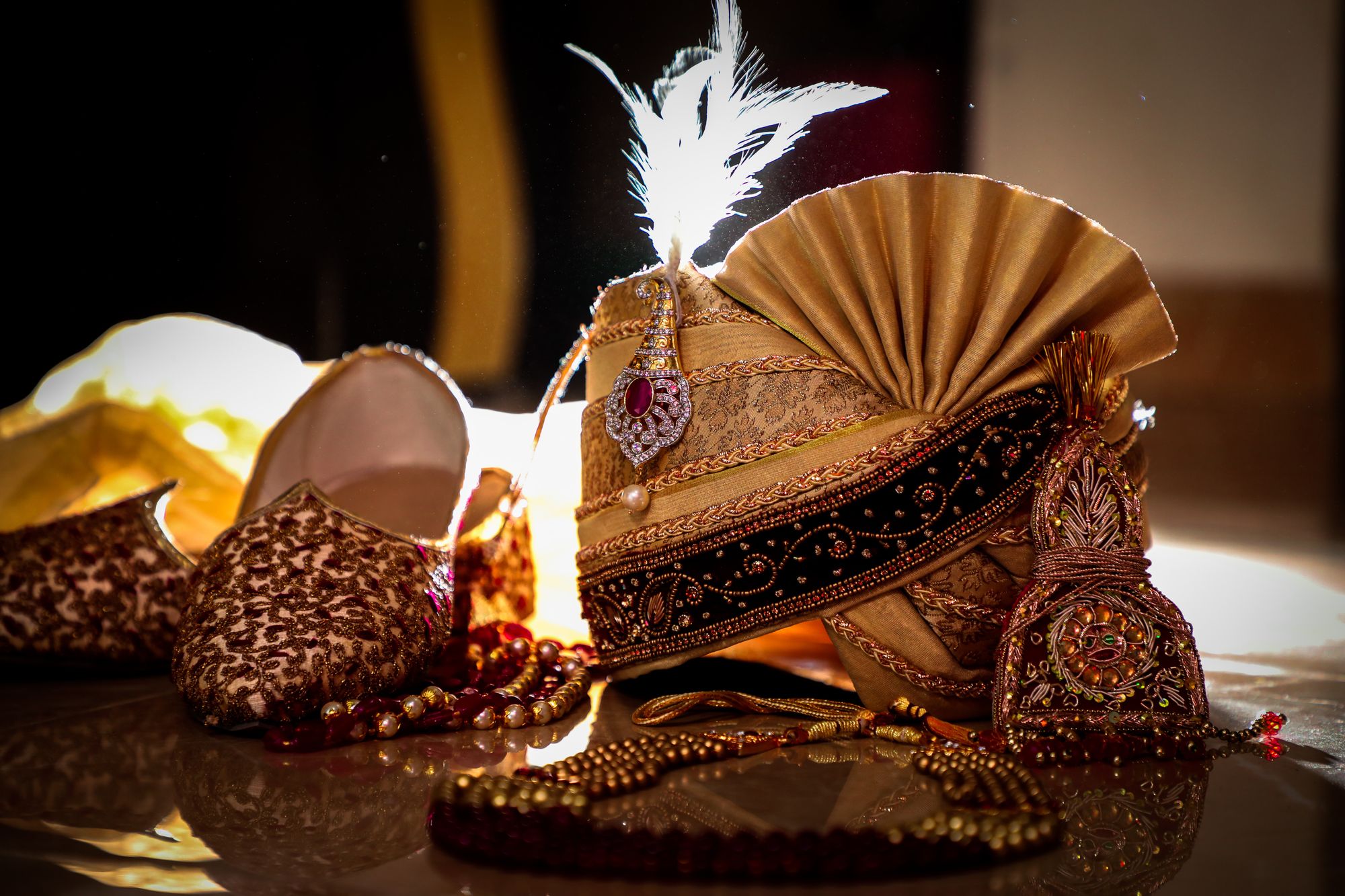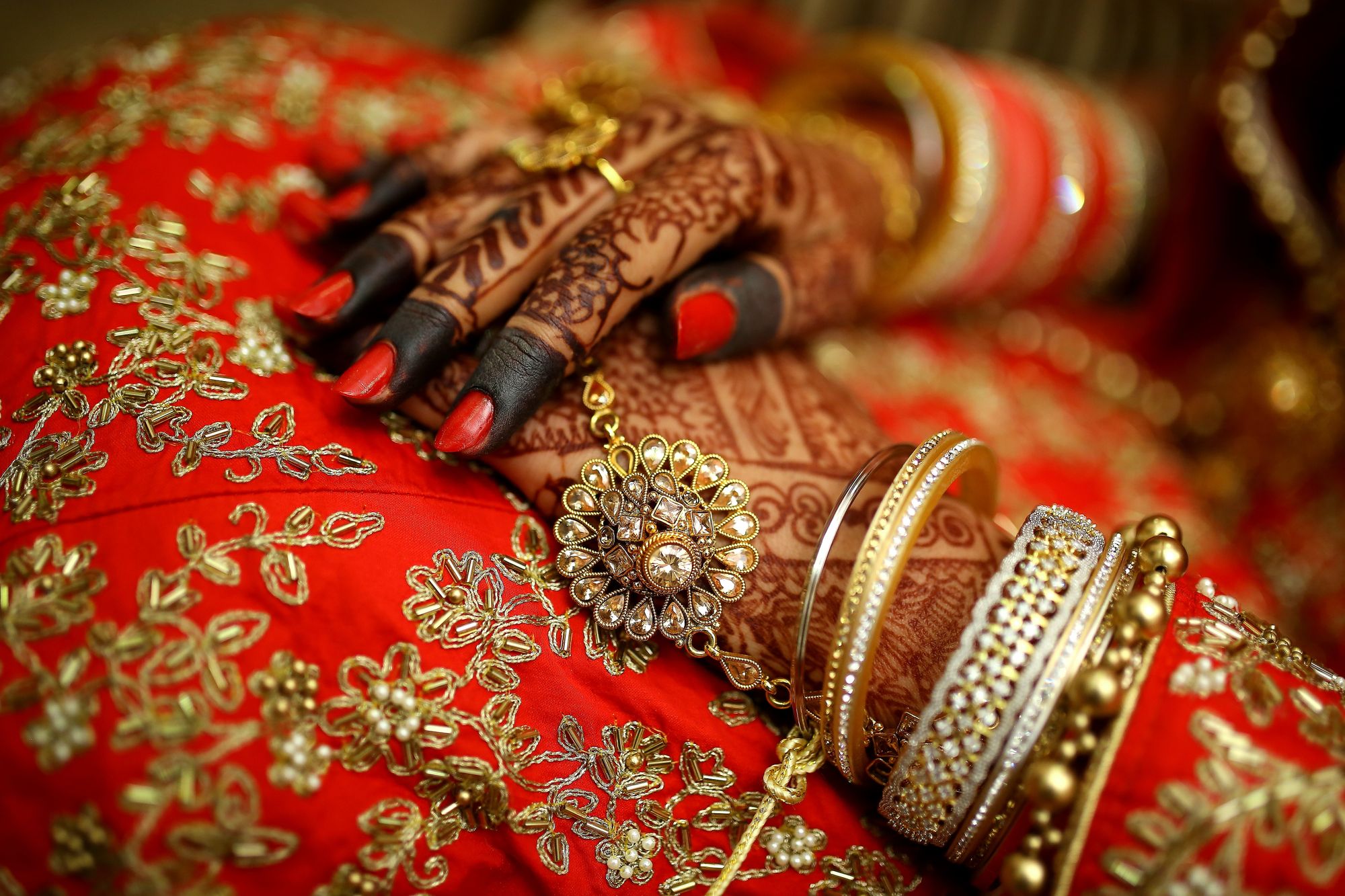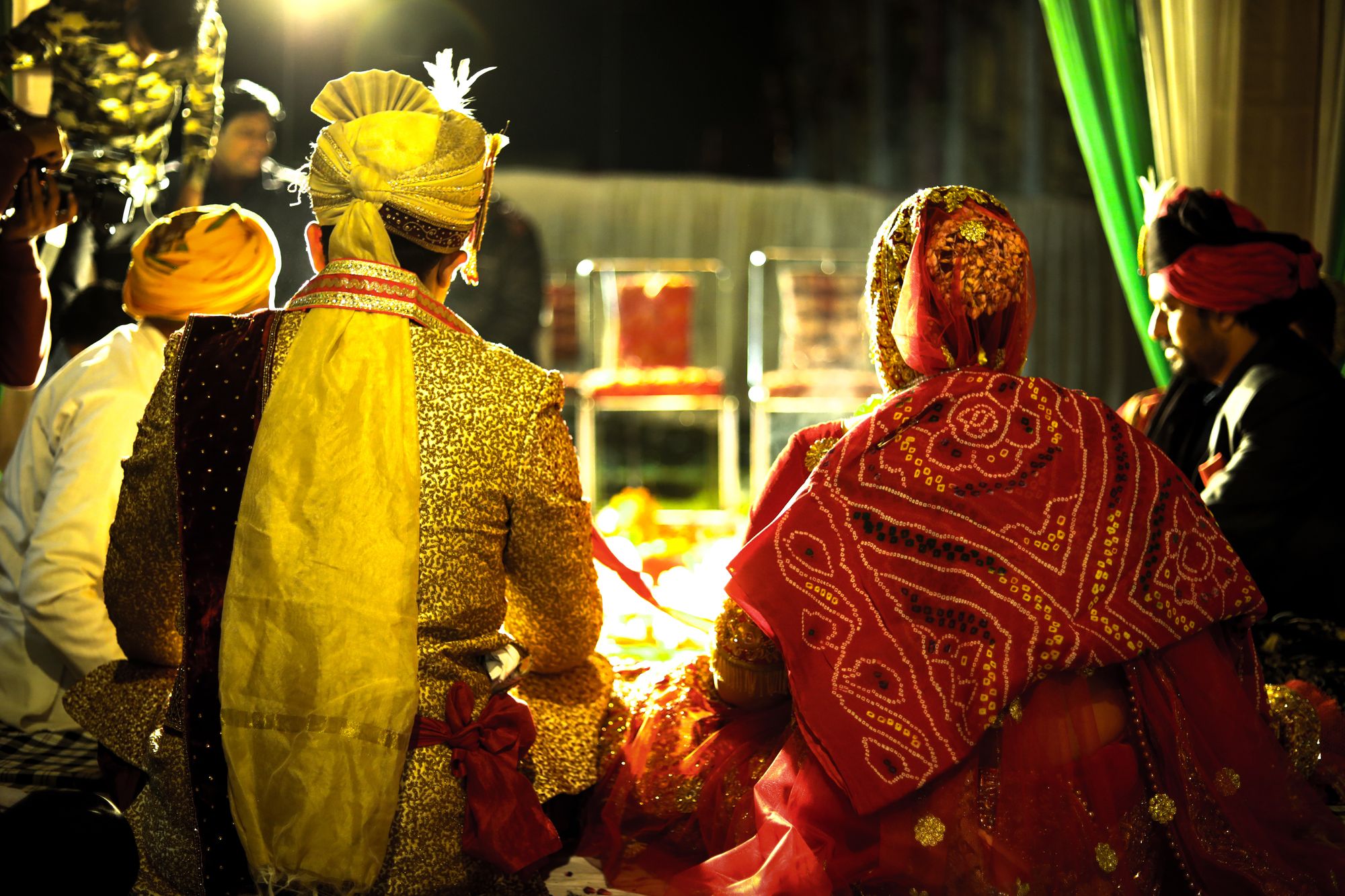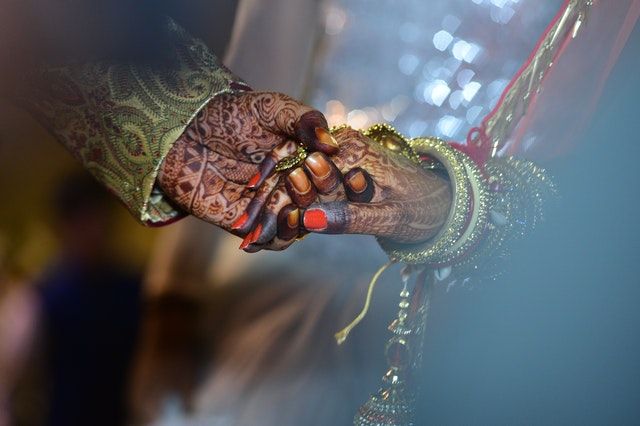Variable customs and bountiful cultures are surrounding the wedding realm all over the world. And one of the most colorful and scintillating of them are the Indian Muslim weddings. Islam is one of the most prominent religions and has numerous rituals and unique traditions to follow in their ceremonies. Over 172 million people marry by traditional Muslim rules in India.
Although Muslim marriage customs and relations vary depending on country of origin and government regulations, both Muslim men and women from around the world are guided by Islamic laws and practices specified in the Quran.
This beautiful and elaborate occasion is mainly celebrated in 3 phases, consisting of pre-wedding rituals, wedding rituals, and post wedding rituals.
Pre-wedding Rituals

Salatul Ishtikara:
Arranged marriages are prevalent among Indian Muslims and the matches are generally sought within the same religious sect and communities. Once a match has been finalized by the families who deem each other compatible, the religious head or the Imam of the nearby mosque is intimated and he performs a special prayer where he seeks Allah’s consent for the intended union and asks Him to bless the future couple. This marks the official announcement of the marriage to the community. The would-be bride and groom also attend the prayers and ask for guidance to Allah through prayer.
Imam Zamin:
Following the Ishtikara, the groom’s mother, on an auspicious day, visits the bride’s home carrying gifts and sweets. She also carries a gold or silver coin wrapped inside a silk scarf which she ties around her future daughter-in-law’s wrists. This ritual signifies the formal acceptance of the bride into her future family.
Mangni:
Mangni marks the official engagement ceremony between the bride and groom and their respective families. Close friends and relatives from both the families gather on a pre-determined day to witness the bride and groom exchange rings. Each family showers the other with gifts of sweets, fruits, dry fruits, clothes and sometimes cash. This ceremony officially seals the intention of marriage between the two families and the bride and the groom are considered betrothed to each other in the eyes of the society.
Manjha:
This is certainly an adopted ritual within the Muslim wedding practices in India. A day or two before the actual Nikah ceremony, the bride is dressed up in yellow finery. A paste made of Turmeric, sandalwood and rose-water is applied to the bride’s face, hands and feet. The women of the family gather for the occasion to participate in a fun and full of mischief event. They take their turn in applying the paste to the bride and to each other. After application of turmeric paste is complete, the bride goes on to take the bath. After her Manjha, the bride is not supposed to leave the house till her wedding day. The same event is also observed at the groom’s house as well.
Mehndi:
Middle-eastern and Indo-Pakistani Muslim brides observe an elaborate ritual involving henna paste known as Mehndi. It is again a women-centric event, where the women of the family gather around the bride the evening before the wedding. The most artistic lady in the family is entrusted with the task of applying henna paste in unique, elaborate designs on the bride’s hands and feet. Nowadays, professional Mehndi artists are also hired to do the job. It is customary to include the groom’s initials within the bride’s henna designs which he has to discern on their first night together. Other female members of the family also get their hands painted with henna.

Sanchaq:
During this pre-wedding ritual, members of the groom’s family visit the bride’s place bearing gifts for her from her future in-laws. Along with these gifts of sweets, fruits etc., the bridal outfits to be worn at the time of the Nikah are also sent. Accompanying the outfit, matching jewelry and other accessories are also sent. Some families even send over perfumes, cosmetics and toiletries for the bride.
Wedding Day Rituals

Baraat:
The groom sets out from his home with great pomp and show accompanied by a host of his close friends and relatives. A beautifully decorated car is generally sent by the bride’s family to bring the groom. A member of the bride’s family goes to the groom’s place and sort of escorts him on the way to the wedding venue. The relatives of the groom follow this car and the whole wedding party heading towards the wedding venue is known as the Baraat.
Welcoming:
As the groom arrives at the wedding venue he is met at the entrance by the bride’s family members. He is warmly welcomed into the venue and is offered a drink of sweet Sherbet by his brother-in-law who gives him company for the drink. The relatives of the groom also receive a grand welcome and are sprayed with ittar-scented or rose-water as they enter the wedding venue.
Nikah:
In Islam, marriage is addressed as "Nikah". The Wedding or Nikah ceremony is officiated by a religious priest or Maulvi. The men and the women are seated in separate groups for the ceremony. The women generally take their place around the bride and the men with the groom. The father of the bride is appointed Wali or guardian to look after the bride’s interest in the Nikah by the Maulvi. The groom’s family presents the bride with Mehr which is a generally pre-decided amount of cash to seek her consent for marrying the groom. The Maulvi starts the Nikah proceeding by first saying a prayer from the Quran. Next, he asks the bride if she is consenting to marry the groom by accepting the Mehr. This is where he asks the bride the phrase "Qubool Hain?" (Do you give your consent) three times in a row. The bride has to reply by saying "Qubool Hain" in assertive and affirmative tone all three times. Then the Maulvi moves on to the groom and repeats the procedure. This ritual is known as Ijab-e-Qubool.
The bride and groom are to remain separated from each other so that they are not able to see each other. The Ijab-e-Qubool is followed by signing of the Nikahnama or marriage contract. The Nikahnama outlines all possible duties and rites of both the bride and the groom as decreed by the Holy Quran. At least two observers from each side need to bear witness to signing by both the groom and the bride. This is followed by the recital of Khutba, a religious discourse. The Maulvi then recites paragraphs from the Holy Quran which are equivalent to marriage vows. The bride and groom need not repeat these vows but listen to them. The recital of vows is followed by Duruds wherein the elders of the family shower their blessings on the newly wed couple.
Arsi Mushraf:
During this ritual the couple get the chance to lay eyes on each other for the first time after the marriage has been solemnized. A mirror is kept between the bride and the groom and the Holy Quran is placed on top of it. The couple is to look in the mirror where they can see the reflection of their spouses.
Post-wedding Rituals

Rukhsat:
Soon after the wedding is concluded, the bride bids tearful goodbye to her family and sets off for her husband’s house. When she arrives at her husband’s house, she is extended a warm welcome by her mother-in-law. As a gesture of welcome as well as reminder of her duties, the Holy Quran is placed on her head.
Walima:
The ceremony of Walima marks the public declaration of the Muslim marriage. It is generally done by holding a grand reception party. For the reception, the bride and groom are generally seated on a throne atop a stage, where they meet and greet all members from both families. The event includes a grand feast of traditional Muslim delicacies like Biryani, Meat Korma etc.
Chauthi:
This ceremony involves the bride visiting her parent’s home on the fourth day of the wedding accompanied by her new husband. Her parents treat the newly wed couple with a lavish lunch and give them various gifts. The Chauthi concludes all the events of a typical Muslim Wedding.




